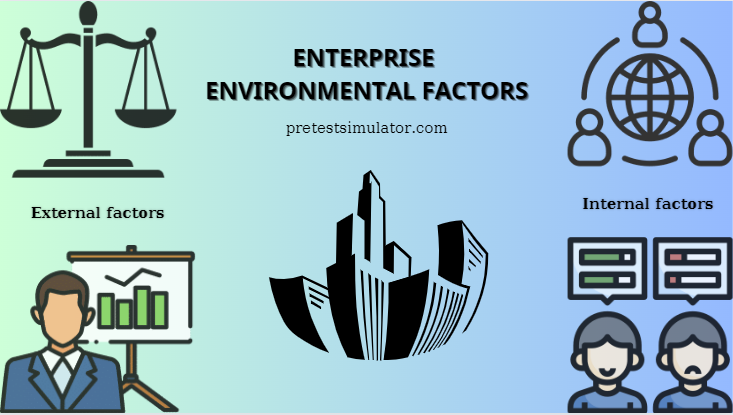What is Enterprise Environmental Factors

HOW EEFs IMPACT YOUR BUSINESS
DEFINITION
Enterprise Environmental Factors (EEFs) is considered an input to many project management processes, especially for most planning processes.
EEFs refer to conditions, not under the project team's control but that influence, limit, or lead the project. These conditions can be internal and or external to the organization. These factors can increase or limit project management options.
In addition, these factors can positively or negatively affect the results. EEFs vary in type or nature. Considering these factors, if the project is to be effective.
The EEFs include: Internal Factors & External Factors
INTERNAL FACTORS
- Organizational culture, structure, and governance
For example, Vision, mission, values, beliefs, cultural norms, leadership style, hierarchical and power relationships, organizational style, ethics, and code of conduct
- Geographical distribution of facilities and resources
For example, Factory locations, virtual teams, shared systems, and cloud computing.
- The infrastructure
For example, The organization's facilities, equipment, communication channels, IT hardware, availability, and organizational capacity
- IT Software
For example, Planning & Scheduling software tools, configuration management systems, web interfaces for other online automation systems, and work authorization systems
- Available resources
For example, Contractual and purchasing constraints approved suppliers and subcontractors, and partnership agreements.
- Staff capacity
For example, expertise, skills, competencies, and expertise in human resources
EXTERNAL FACTORS
- Market conditions
For example, competitors, brand recognition, market share, and trademarks
- Sociocultural influences and issues
For example, Political environment, code of conduct, ethics, and perception
- Legal restrictions
For example, national or local laws and regulations relating to security, data protection, business conduct, employment, and procurement
- Commercial database
For example, Benchmark results, standardized cost estimation data, industry risk research information, and risk databases
- Academic research
For example, studies, publications, and industry benchmark results
- Government or industry standards
For example, regulatory agency regulations and standards related to the product, production, environment, quality, and workmanship
- Financial review
For example, exchange rates, interest rates, inflation rates, tariffs, and geographic location
- Physical environmental factors
For example, working conditions, weather, and restrictions